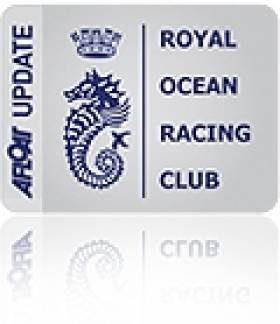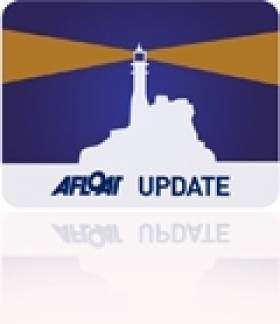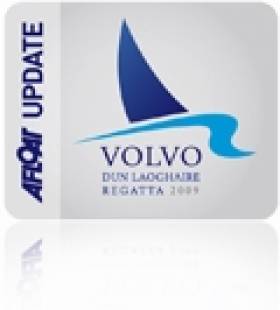Displaying items by tag: Dowling
Patterson Fastest at Tullamore Time Trial
#Rowing: Glenn Patterson of Sligo was the men’s winner of the Tullamore Time Trial on Saturday. Emily Dowling of the host club, Offaly, was the fastest woman. Dowling is a junior competitor.
| TTT 2017 | Race 4 | 14.00 p.m. | |||||||||
|---|---|---|---|---|---|---|---|---|---|---|---|
| Name | Club | Grade | Launch Time | ||||||||
| num | Cum Time | num | Cum Time | Time | Mins | Secs | time | ||||
| G.Patterson | Sligo | MS | 13.39 | 1 | 2810.29 | 1 | 3325.95 | 515.66 | 8 | 35.66 | 08:35.00 |
| C Brady | ORC | MS | 13.39 | 2 | 2876.28 | 2 | 3395.57 | 519.29 | 8 | 39.29 | 08:39.00 |
| M Avery | GNM | MM(A) | 13.39 | 3 | 2913.47 | 3 | 3487.83 | 574.36 | 9 | 34.36 | 09:34.00 |
| P. Gallen | ATLN | MM(F) | 13.39 | 4 | 2942.4 | 4 | 3524.81 | 582.41 | 9 | 42.41 | 09:42.00 |
| B Cross | GNM | MM(A) | 13.37 | 5 | 2989.59 | 5 | 3568.97 | 579.38 | 9 | 39.38 | 09:39.00 |
| B Colsh | Sligo | MJ15 | 13.37 | 6 | 3034.62 | 6 | 3613.19 | 578.57 | 9 | 38.57 | 09:38.00 |
| A Carroll | ATLN | MJ15 | 13.37 | 7 | 3074.95 | 7 | 4009.23 | 934.28 | 15 | 34.28 | 15:34.00 |
| R Dunne | ATLN | MJ15 | 13.35 | 8 | 3119.4 | 8 | 3721.85 | 602.45 | 10 | 2.45 | 10:02.00 |
| L Naughton | ATLN | MJ15 | 13.35 | 9 | 3150.84 | 9 | 3746.14 | 595.3 | 9 | 55.3 | 09:55.00 |
| C Cronin | ATLN | MJ14 | 13.33 | 10 | 3268.41 | 10 | 3961.5 | 693.09 | 11 | 33.09 | 11:33.00 |
| A Donovan | ATLN | MJ14 | 13.33 | 11 | 3227.1 | 11 | 3811.77 | 584.67 | 9 | 44.67 | 09:44.00 |
| D Murtagh | ATLN | MJ12 | 13.33 | 12 | 3903.54 | 12 | 4668.51 | 764.97 | 12 | 44.97 | 12:44.00 |
| E Dowling | ORC | WJ18 | 13.33 | 13 | 3327.28 | 13 | 3922.14 | 594.86 | 9 | 54.86 | 09:54.00 |
| E Corcoran | CAR | WJ16 | 13.31 | ||||||||
| G Guckian | CoS | WJ16 | 13.31 | 15 | 3829.98 | 15 | 4530.12 | 700.14 | 11 | 40.14 | 11:40.00 |
| D Slater | CAR | WJ16 | 13.31 | 16 | 3364.83 | 16 | 4034.11 | 669.28 | 11 | 9.28 | 11:09.00 |
| E Oçonnor | Sligo | WJ15 | 13.29 | 17 | 3404.62 | 17 | 4166.59 | 761.97 | 12 | 41.97 | 12:41.00 |
| A Murphy | ORC | WJ15 | 13.29 | 18 | 3473.71 | 18 | 4092.89 | 619.18 | 10 | 19.18 | 10:19.00 |
| A Egan | CAR | WJ15 | 13.29 | 19 | 3506.45 | 19 | 4178.19 | 671.74 | 11 | 11.74 | 11:11.00 |
| G Creighton | CoS | WJ14 | 13.27 | 20 | 3604.1 | 20 | 4363.68 | 759.58 | 12 | 39.58 | 12:39.00 |
| P Kaminska | CoS | WJ14 | 13.27 | 21 | 3677.13 | 21 | 4370.71 | 693.58 | 11 | 33.58 | 11:33.00 |
| L Kate | Cos | WJ14 | 13.25 | 22 | 3713.76 | 22 | 4404.57 | 690.81 | 11 | 30.81 | 11:30.00 |
| E Noyce | ORC | WJ14 | 13.25 | 23 | 3754.3 | 23 | 4449.72 | 695.42 | 11 | 35.42 | 11:35.00 |
| M Cummins | GNM | WM | 13.25 | 24 | 3785.64 | 24 | 4431.04 | 645.4 | 10 | 45.4 | 10:45.00 |
| C.Nolan | ORC | WM(C) | 13.23 | 25 | 3881.58 | 25 | 4545.96 | 664.38 | 11 | 4.38 | 11:04.00 |
| J Patterson | GNM | WM(C) | 13.23 | ||||||||
| F Durkin | ORC | MM(H) | 13.15 | 27 | 3978.11 | 27 | 4780.77 | 802.66 | 13 | 22.66 | 13:22.00 |
| C. Murtagh | ATLN | TO(WJ15) | 28 | 3572.5 | 28 | 4223.5 | 651 | 10 | 51 | 10:51.00 |
Royal Irish Yacht Arabella Takes Three RORC Awards
The Royal Ocean Racing Club in London has awarded Niall Dowling's Royal Irish yacht Arabella (a J111) the Alan Paul Trophy for consistent high performance in IRC, the Serendip Trophy for best series-produced Yacht in IRC, and the second place medallion in IRC overall for the 2011 RORC season.
'Arabella' currently lies 2nd out of over 300 boats in the RORC Overall Series behind Piet Vroon"s Kerr 46 Tonnerre de Breskens. Crew for the Fastnet will include Class 40 sailor John Cunningham, GBR Olympic Finn coach Matt Howard, Volvo sailor Craig Bowie. Also on board Dowling's long term friend, skipper and double handed campaigner Michael Boyd a veteran of many Fastnet campaigns the first of which was on the Irish Admirals Cup team in 1983 will further bolster the offshore experience. The dynamic duo of Peter Knight and Aaron Cooper both amongst the elite graduates of the Solent Keelboat Academy will cover roles of bowman and navigator respectively.
When asked about the campaign Dowling said "this campaign is all about getting a group of friends that used to sail a lot together back out there. Nick and I used to race dinghies, instructed sailing together in Dun Laoghaire and campaigned offshore. Nick has been doing lot of competitive team racing but until this campaign the last offshore race we did together with Michael was the Round Ireland race in 2006 ... . The RORC Eddystone Race in May definitely showed there were no cobwebs as Nick drove most of the way back from the lighthouse topping out at 22.6 knots and averaging mid teens! John although normally based in the US has been doing a fellowship at Cambridge University and has been on board since the boat arrived". Irish Olympic Finn sailor Tim Goodbody and the National Yacht Club's now Brighton based boat designer Jonny Coate are also regulars on board. For the Fastnet there will be a competitive fleet of 77 boats in IRC2 where 'Arabella' currently lies 2nd in the series behind RORC commodore Andrew Mc Irvine's First 40 'La Reponse'.
Irish Sea Events Offer Entry Discounts
"The way this works is that the Clyde Cruising Club are offering a 25% rebate for boats from the 4 Dun Laoghaire Clubs (DMYC, NYC, RIYC, RStGYC) that enter the Brewin Dolphin Scottish series before the expiration of the early bird discount period which expires on April 22nd explained Dun Laoghaire event secretary, Ciara Dowling.
As a reciprocal arrangement the committee of the Volvo Dun Laoghaire Regatta are offering a discount of 50% from the full entry fee to all boats that enter both regattas. To avail of this, boats must register for the early bird entry fee in the Volvo Dun Laoghaire Regatta prior to 2 May 2011. Note the 50% discount will be applied to the full entry fee rate and not the early bird rate.
To avail of this arrangement for the Scottish Series contact the Brewin Dolphin Scottish Series office for details, [email protected] 0044141 221 2774.
To avail of this arrangement for the Volvo Dun Laoghaire regatta visit the event website at www.dlregatta.org or email [email protected]
The Scottish Series takes place from 27–30 May and the Dun Laoghaire regatta from July 7th–10th 2011.
In a further boost for Dun Laoghaire sailors heading north the feeder race from Bangor to Tarbert has been re-instated.
Troon and Largs Marinas are offering competitors berthing rate discounts around Scottish Series.
Competitors from Scotland coming to Dun Laoghaire are reminded that the entry fee to the regatta includes free berthing for the duration of the event.
The official Notice of Race and Online Entry are now available at www.dlregatta.org



























































